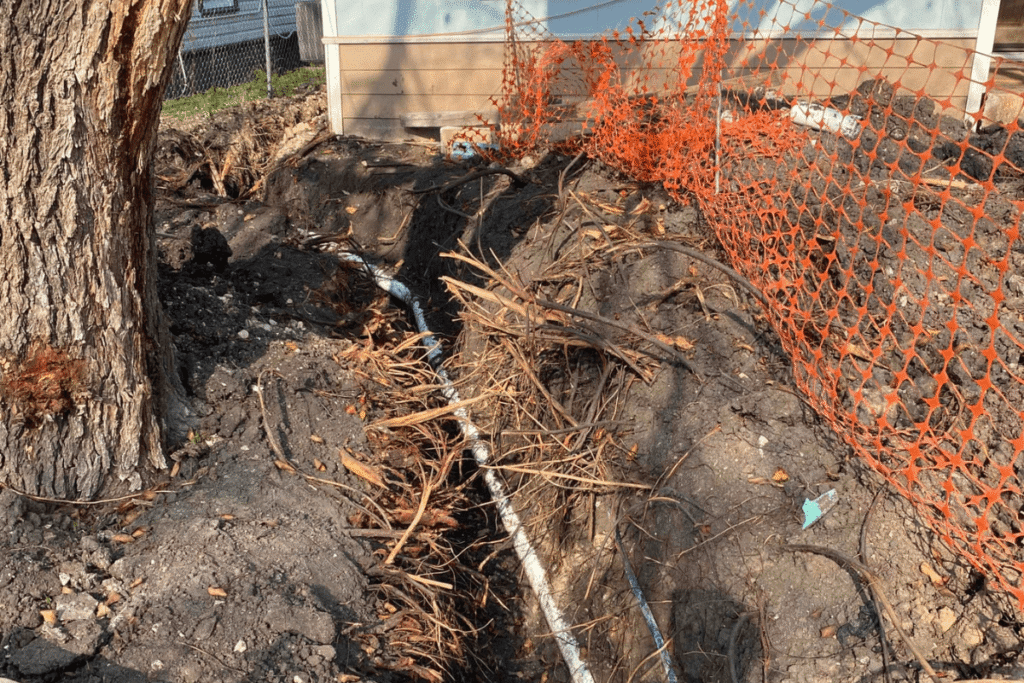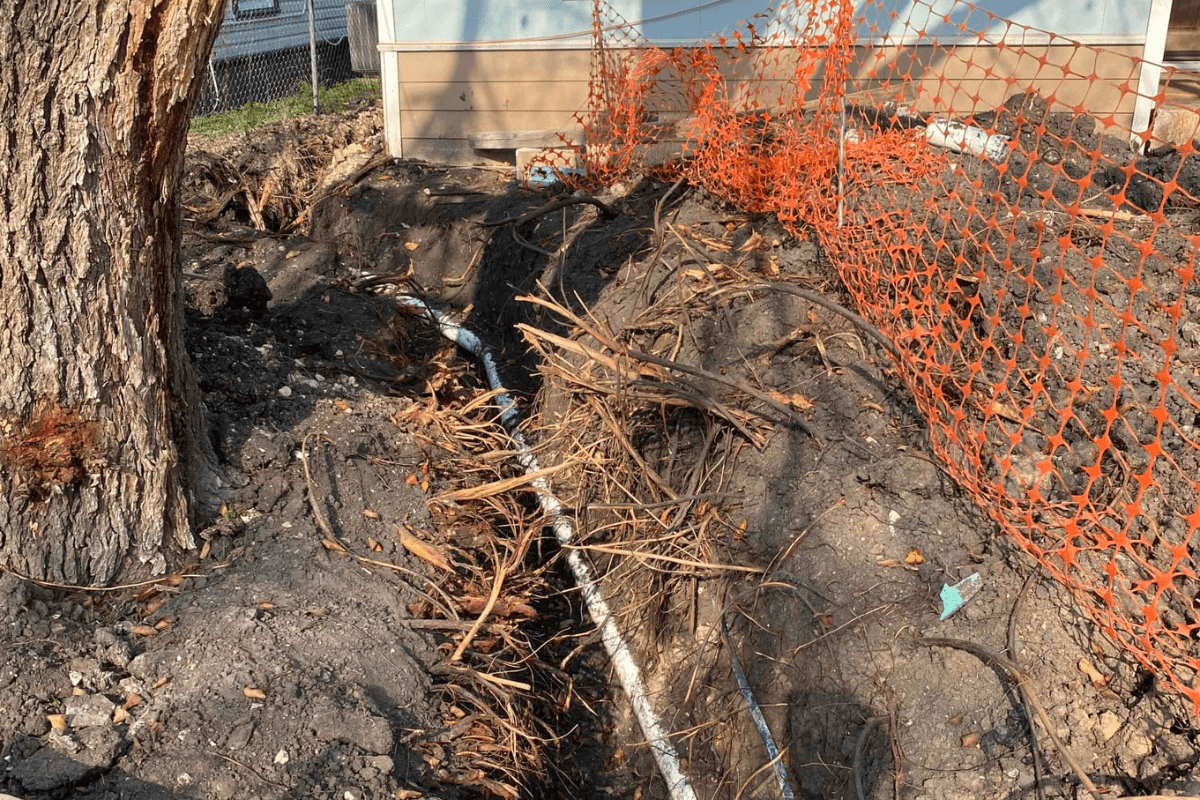Uh-oh, Broken Sewer Line? Here Are 3 Ways to Fix It Without Wrecking Your Yard
Let’s be real for a second: “broken sewer line” might be the last thing you ever want to hear. The phrase alone sounds expensive, messy, and like your weekend plans just turned into watching someone dig up your lawn.
But before you start panic-Googling and imagining bulldozers in your front yard, breathe. There are real solutions—and they don’t all involve turning your garden into a construction zone.
In this guide, we’ll break down:
- Why sewer line problems happen (spoiler alert: it’s not always your fault)
- 3 smart ways to fix them (with trench and trench-less options)
- Which method is best for your home, budget, and sanity
Let’s get you back to flushing with confidence.

First Things First: How Did Your Sewer Line Even Break?
You were minding your business, living your life… and then BAM. Sewage backups, weird smells, or that dreaded plumber diagnosis.
So what gives? Sewer line issues can come out of nowhere, but they usually have a few common culprits:
💥 1. Chemical Drain Cleaners (Yes, They Can Be Too Harsh)
If you’ve been pouring store-bought drain cleaner down your sinks like it’s magic potion—bad news. Over time, those harsh chemicals can wear down your pipes and lead to cracks or weak spots.
🌍 2. Shifting Ground or Earthquakes
Even mild ground movement can mess with your underground pipes. They can shift, unhook, or even snap entirely.
🚗 3. Parking on the Lawn (Oops)
That extra parking spot on your lawn? Not great. The weight of a car or truck can slowly crush your pipes underground, leading to a sewer line collapse.
🧓 4. Good Ol’ Age
Pipes aren’t immortal. Depending on the material, they have a lifespan. Older homes especially are at risk—cast iron, clay, and Orangeburg pipes tend to give out after decades of service.
So Your Sewer Line’s Busted—Now What?
The good news? You’ve got options. Depending on how damaged your line is, you might not need a full excavation. There are modern solutions that are quicker, cleaner, and in many cases, way less destructive to your yard.
Here are your three best bets:
🛠 Option 1: Traditional Trench Repair (aka The Digging Route)
If you’re okay with a bit of yard disruption and need a cost-effective solution, this classic method might be your best bet.
What Happens:
Your plumber digs up the area where the sewer line is damaged, replaces or repairs it, runs a camera through to check connections, then covers everything back up.
Pros:
- Budget-friendly
- Great for severe or widespread damage
- Full visibility = full control
Cons:
- Your landscaping might not survive
- Takes more time
- Can be messy (but effective)
If your priority is affordability and access, this method delivers. Just be ready for some yard rehab afterward.
🧪 Option 2: Trench-less Epoxy Lining (aka Pipe-Within-a-Pipe)
This is where things get high-tech. If your pipe is mostly intact but has some leaks or cracks, trench-less epoxy lining could be the perfect no-dig solution.
What Happens:
Your plumber digs one small hole to access the line, cleans it out, then inserts a flexible liner coated with epoxy resin. It cures inside the old pipe, creating a brand-new pipe inside the damaged one.
Pros:
- Minimal digging (your garden will thank you)
- Fast and efficient
- Adds decades to your pipe’s life
Cons:
- Only works if your old pipe isn’t totally collapsed
- Epoxy takes time to cure (1–2 hours or more)
- Precision is key—missed spots may need rework
Ideal if you’re thinking, “I want this fixed, but my lawn is NOT getting destroyed.”
🔧 Option 3: Trench-less Pipe Bursting (aka Out with the Old, In with the New)
When your sewer line is totally shot, pipe bursting is your fresh-start fix. It’s a trench-less solution that completely replaces your old pipe—with almost no digging.
What Happens:
Two small holes are dug at each end of the damaged section. A machine threads a new pipe into the ground while simultaneously bursting apart the old one.
Pros:
- Full pipe replacement without massive digging
- New pipe is durable and up to code
- Long-lasting, no-patch solution
Cons:
- Slightly higher cost than epoxy repair
- The old pipe remnants stay underground (but don’t affect function)
This method is perfect when you want a complete reset on your sewer line—no band-aids, no compromises.
Which Sewer Repair Option Is Right for You?
It really comes down to three big questions:
💸 What’s your budget?
Trench repairs tend to be more affordable upfront but come with landscaping costs. Trench-less methods may cost more but save your yard and time.
🪴 How much do you care about your landscaping?
If you’ve spent time (and money) beautifying your lawn or driveway, trench-less is a clear winner.
🛠 Are you fixing or replacing?
Small cracks = epoxy might do the trick. Fully collapsed line = time for pipe bursting.
Final Word: You’ve Got This
Sewer line problems aren’t fun—but they don’t have to be scary either. With today’s technology, there are smart, efficient ways to fix the problem without turning your home into a construction zone.
The key? Talk to a professional, ask questions, and weigh your options. Once you know what you’re dealing with, the decision gets a whole lot easier.
And remember: even if the problem is underground, you’re not in over your head.
❓ Frequently Asked Questions (FAQ)
Q1. What are trenchless sewer line repair methods?
A: Trenchless sewer repairs are non-invasive techniques that fix or replace underground pipes without extensive digging. Common methods include pipe bursting, pipe relining (CIPP), and hydro jetting.
Q2. How do I know if I have a broken sewer line?
A: Signs include foul odors, slow drains, soggy patches in your yard, or a sudden spike in water bills. A professional camera inspection can confirm the damage.
Q3. Is trenchless sewer repair more expensive than traditional digging?
A: While upfront costs can be slightly higher, trenchless methods often save money in the long run by avoiding landscape repairs and reducing labor costs.
Q4. How long does trenchless sewer repair take?
A: Most trenchless sewer repairs can be completed within one day, depending on the extent of the damage and the chosen method.
Q5. Can all sewer lines be repaired using trenchless methods?
A: Not always. If your pipes have completely collapsed or are severely misaligned, traditional excavation might still be needed. A professional inspection will determine eligibility.
- broken sewer line
- cost of sewer line repair
- dig-free sewer fix
- epoxy pipe lining
- fix sewer without digging
- lawn-friendly sewer repair
- pipe bursting method
- pipe relining solutions
- plumbing repair options
- residential sewer repair
- sewer line issues
- sewer line repair
- sewer line replacement
- sewer pipe epoxy
- sewer repair for homeowners
- signs of broken sewer line
- trench sewer repair
- trenchless plumbing solutions
- trenchless sewer repair
- underground pipe repair














Leave a comment